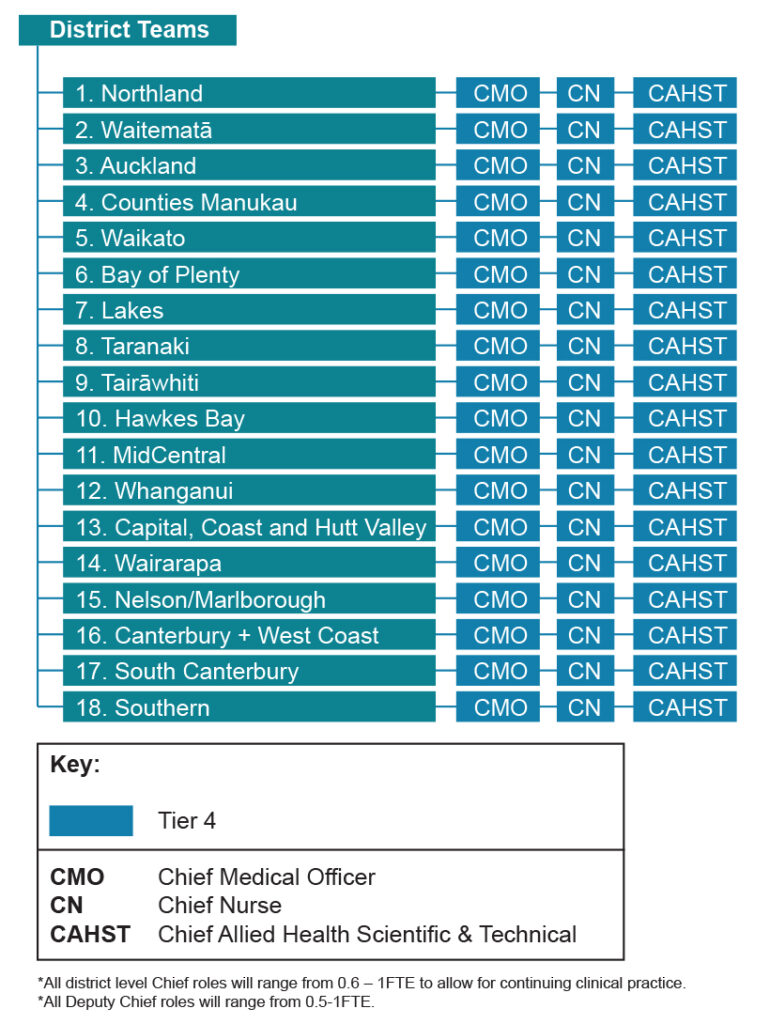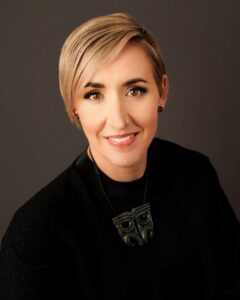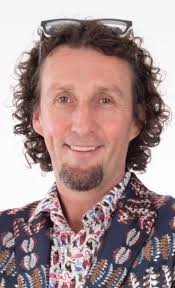
- Chief nurses and medical officers will have a wider “whole of system” focus beyond their own hospital.
- District clinical chiefs (nurses, medical officers, allied health scientific & technical, midwifery and mental health & addiction) to work in partnership with regional deputy chief executives. They will also have the opportunity to work as a regional chief and bring their expertise to the wider regions.
- Hauora Māori services are being consulted on separately.
Te Whatu Ora chief nursing officer Nadine Gray this week confirmed that, after consulting clinicians around the country, the proposal would not go ahead.
“It meant that the direction changed and we are now continuing with 18 [DONs] rather than 14 with no amalgamation of the roles and they’re fulltime, not 0.4,” she told Kaitiaki.
‘It absolutely was a consultation and what we got to was a decision that having 18 nursing leaders across the country is really important.’
Last October, Te Whatu Ora proposed merging 18 health districts into 14, suggesting replacing the four surplus DONs with part-time “nurse leads” in affected regions. The proposed mergers were for South Canterbury and Southern; Midcentral and Whanganui; Capital Coast and Hutt Valley with Wairarapa; and Bay of Plenty with Lakes.
At the time, chief clinical officer Richard Sullivan said it would “ensure more consistency” in clinical leadership nationally. However, it would also have yielded cost savings at a time Te Whatu Ora was under pressure to save $2 billion.

NZNO — Tōpūtanga Tapuhi Kaitiaki o Aotearoa leaders called the proposal another threat to nursing leadership.
But in December, Te Whatu Ora said it was “rethinking” after more than 1200 responses and 10 in-person consultation hui around the country.
“We received strong feedback . . . with many concerns about the potential to lose local clinical voice and autonomy . . . and destabilise leadership at an important time when districts are focusing on targets,” its clinical leadership consultation decision document states.
Gray said it was “absolutely” good news for nursing leadership that the 18 DON roles — many of which had midwifery leadership also — would remain.
“The feedback was actually heard from all of nursing, from all of clinical leadership and [every] district . . . of the importance of having that leadership which is visible, that’s on the ground — there was nothing they said that we could disagree with,” Gray said.

“It absolutely was a consultation and what we got to was a decision that having 18 nursing leaders across the country is really important.”
All 18 current DON/director of nursing and midwifery roles would also be renamed “chief nurse”, as an internationally-recognised title, in the restructure.
Only in Bay of Plenty, which had a bicultural nursing leadership model with two DONs — a Māori and non-Māori — would there be a job loss, as the two roles would merge into a single chief nurse.
“It’s uncomfortable but both have been amazing and professional about the whole process,” Gray said.
Recruitment was underway for all 18 chief nurses around the country and she hoped to have them in place by end of March.





